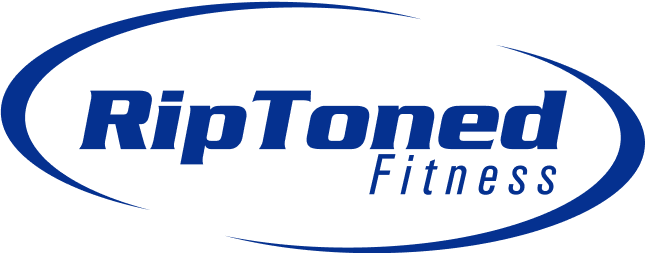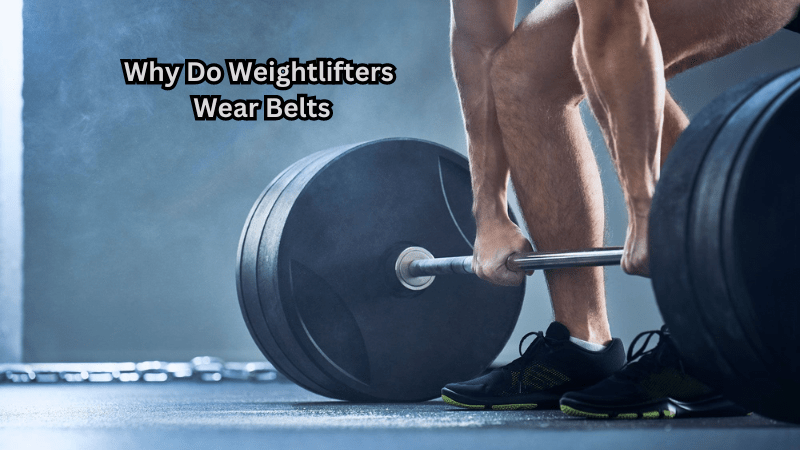Weightlifting, a cornerstone of both competitive sports and personal fitness, demands not only strength but also precision and safety.
Among the gear that athletes use, weightlifting belts stand out as a crucial accessory. These belts are more than just equipment; they play a vital role in enhancing performance and protecting the body during heavy lifts.
Understanding why weightlifters wear belts involves exploring their benefits, how they function, and the scenarios in which they are most effective. This knowledge is essential for anyone looking to maximize their lifting potential while minimizing the risk of injury.
Overview Weightlifting Belt
A weightlifting belt is a sturdy and wide strap that wraps around the waist and lower back of an individual during weightlifting exercises. These belts are usually made of leather, nylon, or other durable materials and come in varying widths and thicknesses. They also have a buckle or velcro to secure them in place.
Furthermore, weightlifting belts are designed to be worn tightly around the waist, providing support and stability to the core muscles. This allows for a more efficient transfer of power from the lower body to the upper body during lifts.
Types of Weightlifting Belts
Weightlifting belts come in two main types: powerlifting and Olympic lifting belts. Powerlifting belts are wider and thicker, providing maximum support to the core muscles during heavy lifts such as squats and deadlifts. On the other hand, Olympic lifting belts are narrower and more flexible, allowing for a greater range of motion during explosive movements like snatches and clean and jerks.
Additionally, some weightlifting belts may feature additional padding or contouring to provide extra comfort or protection. Some lifters also opt for custom-made weightlifting belts that cater to their specific body shape and lifting style.
How Weightlifting Belts Work
Weightlifting belts work by creating intra-abdominal pressure, also known as core stability. As the lifter tightens their abdominal muscles and presses them against the belt, it increases the pressure in the abdominal cavity. This pressure acts like a built-in weightlifting support system that stabilizes the spine and reduces stress on the lower back.
Moreover, weightlifting belts also serve as a reminder to maintain proper form during lifts. By wearing a belt, lifters are more likely to engage their core muscles and keep their back flat throughout the movement, reducing the risk of injury. Also, the added support provided by the belt allows lifters to lift heavier weights, leading to better training adaptations over time.
Why Do Weightlifters Wear Belts
Now, to the main question: why do weightlifters choose to wear belts? The answer is simple: to improve performance and prevent injuries. Here are some specific reasons why weightlifters wear belts:
Increased Intra-Abdominal Pressure
As mentioned, weightlifting belts create intra-abdominal pressure by compressing the core muscles. This pressure acts as a support system for the lower back and helps to stabilize the spine during heavy lifts. By increasing core stability, lifters can generate more force and power through their midsection, allowing them to lift heavier weights with less risk of injury.
Reduced Risk of Lower Back Injury
The most common type of injury in weightlifting is lower back injuries due to overloading or improper technique. By wearing a weightlifting belt, lifters can decrease the stress on their lower back and minimize the risk of injury. The belt acts as a safety net and supports the lower back, reducing the strain on this vulnerable area.
Improved Lifting Mechanics
Wearing a weightlifting belt can help lifters maintain proper lifting mechanics throughout their sets. As mentioned earlier, the added support from the belt can act as a reminder to engage core muscles and keep the back flat. This correct form reduces the risk of compensatory movements or rounding of the spine that can lead to injury.
Mental Confidence
In addition to physical benefits, weightlifting belts provide lifters with mental confidence. Knowing that they have added support and stability during heavy lifts allows them to focus on performing their best without worrying about potential injuries. This mental advantage can lead to improved lifting performance and greater gains over time.
Personal Preference
Finally, some weightlifters simply prefer wearing belts due to their personal preference. They may have a history of lower back issues or feel more comfortable with the added support provided by a belt. Ultimately, if wearing a weightlifting belt allows an individual to lift heavier weights safely and confidently, then it is a beneficial choice for them.
These are just some of the reasons why weightlifters wear belts. Ultimately, it comes down to personal preference and what works best for each lifter. Whether one chooses to wear a belt or not, it is important to prioritize proper form and listen to their body's needs during training.
When to Use a Weightlifting Belt
Although weightlifting belts can provide numerous benefits, they are not necessary for every lift or exercise. In general, a weightlifting belt is most beneficial for heavy compound lifts such as squats, deadlifts, and overhead presses. These exercises put the most strain on the lower back and require maximum core stability.
On the other hand, wearing a belt during isolation exercises or lighter lifts may not be as effective. This is because these movements do not have as much potential for injury and do not require as much core stability to perform safely.
Additionally, it is important to use a weightlifting belt in conjunction with proper technique and form. A belt should never be used as a crutch to compensate for poor lifting mechanics. Instead, it should be used to enhance performance and reduce the risk of injury when combined with proper technique.
Potential Drawbacks and Misconceptions
Despite the benefits of weightlifting belts, there are also potential drawbacks and misconceptions associated with their use. Here are a few common concerns:
Dependency on Belts
One common misconception is that wearing a belt will lead to dependency on it for safe lifting. This is not necessarily true as long as the lifter continues to prioritize proper form and technique while using the belt as a tool rather than a crutch.
Moreover, it is important to incorporate core and back strengthening exercises into training routines to maintain overall strength and stability without the use of a belt.
Risk of Injury without Belts
Another concern is that lifters may be at higher risk of injury if they do not wear a belt. While this can be true in some cases, it ultimately depends on the individual's training regimen and ability to maintain proper form. If a lifter consistently trains with good form, they may not need a belt to prevent injuries.
Furthermore, relying solely on a belt for support can lead to weaker core muscles over time. This is because the belt is stabilizing the spine rather than the lifter's muscles.
Restrictions on Breathing and Movement
Some people also worry that wearing a weightlifting belt will restrict their breathing or movement. While the belt may feel tight around the core, it should not restrict breathing as long as it is worn properly. Additionally, the added support from the belt can improve movement patterns and decrease restrictions in certain lifts.
These are just a few common misconceptions and concerns surrounding weightlifting belts. As with any equipment, it is important to use them correctly and in conjunction with proper training techniques.
How to Choose and Use a Weightlifting Belt
When it comes to choosing and using a weightlifting belt, there are a few key factors to consider:
Material and Quality
Weightlifting belts can be made from materials such as leather, nylon, or suede. It is important to choose a high-quality belt that is durable and provides the necessary support for heavy lifts. Leather belts are typically the most popular choice among serious lifters due to their durability and stiffness.
Width
The width of the belt is also an important consideration. Most weightlifting belts range from 4-6 inches in width. A wider belt will provide more support but may restrict movement slightly, while a narrower belt may allow for more flexibility but provide less support.
Fit and Comfort
A weightlifting belt should fit snugly around the waist without being too tight or uncomfortable. It should also allow for some breathing room to prevent restriction. It is recommended to try on a few different sizes and brands before purchasing to find the best fit for individual needs and preferences.
When using a weightlifting belt, it is important to position it properly around the waist, just above the hip bones, with the buckle in front. The belt should be tightened enough to provide support but not so much that it restricts breathing or movement.
Additionally, it is crucial to remember that a weightlifting belt is not a substitute for proper form and technique. It is important to continue focusing on maintaining good form while using a belt as a tool to enhance performance and reduce the risk of injury.
FAQs
Why do weightlifters wear lifting belts?
Weightlifters wear lifting belts to provide additional support to the lower back and core during heavy lifts. A lifting belt helps to stabilize the spine by increasing intra-abdominal pressure, which aids in proper bracing. This support allows weightlifters to lift heavy weights more safely and effectively.
How do weight-lifting belts help with lifting heavier weights?
Weight lifting belts help with lifting heavier weights by providing a rigid surface against which the lifter can brace its core. This increased intra-abdominal pressure supports the spinal erector muscles, reducing the risk of injury and allowing the lifter to lift as much weight as possible with proper form.
What is the difference between velcro belts and traditional weight belts?
Velcro belts and traditional weight belts differ mainly in their closure mechanisms and level of support. Velcro belts are easier to adjust and typically provide sufficient support for lighter to moderate lifting weights. Traditional weight belts, often made of leather with buckle closures, offer more robust support and are better suited for lifting heavier weights, providing greater stability for the spine.
Do weight belts only support the back when lifting weights?
Weight belts support not only the back but also help in stabilizing the entire core when lifting weights. By promoting proper bracing, weight belts assist in engaging the abdominal and spinal erector muscles, ensuring that the lifter maintains correct posture and reduces the risk of injury during heavy lifts.
Conclusion
In conclusion, weightlifting belts offer significant benefits by enhancing intra-abdominal pressure, improving lifting performance, and reducing the risk of injury. However, they should be used correctly and in appropriate scenarios to maximize their effectiveness. Integrating belts into your weightlifting routine can provide added support, but it’s crucial not to rely on them exclusively.
Maintaining natural core strength and using proper technique are essential for long-term success. For personalized guidance, consider consulting a professional trainer who can tailor advice to your specific needs and goals. Embrace the power of weightlifting belts to boost your performance and safeguard your health.


